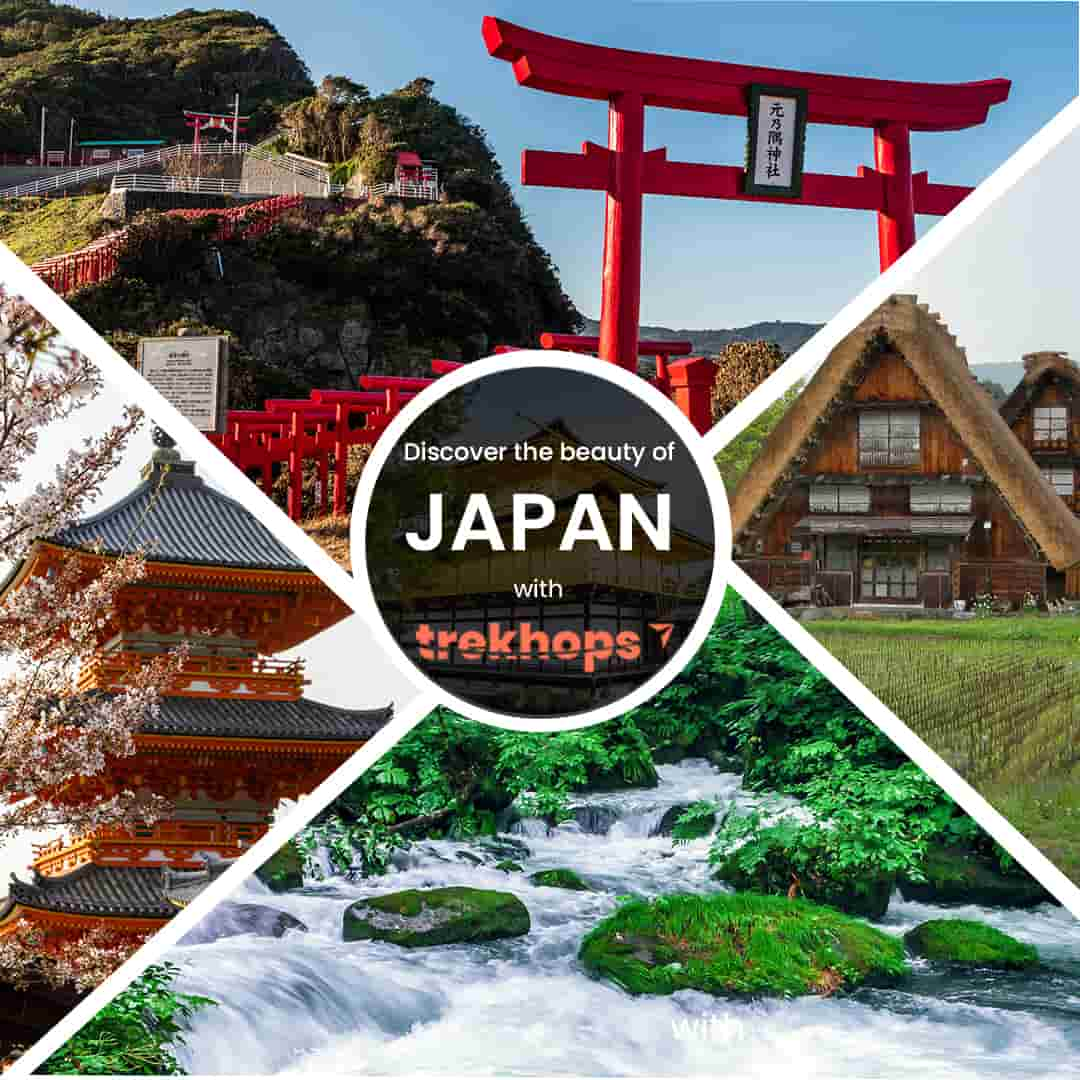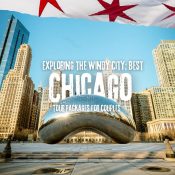
Best Places to Visit in Japan
Discovering Japan is like finding oneself in a place where ancient rituals meet the latest trends. Although Japan seems to be a small country, it still has all the surprising elements like breathtaking nature, modern museums, and hillside shrines.
Read our guide for the best places to visit in Japan:
- Kamikochi, Nagano
- Oirase Gorge, Aomori
- Kinkakuji Temple, Kyoto
- Shirakawa-go, Gifu Prefecture
- Motonosumi Shrine, Yamaguchi
In Kyoto, go to the Gion district and meander around those tiny streets. You will see geishas elegantly gliding by. If you are into nature, Hokkaido’s national parks can be interesting to you. And when you want some relaxation at the beach, head to Okinawa with its stunning blue waters and sandy beaches.
Wherever you decide to travel in Japan, there’ll be no way for you to forget about it. Believe us, you’ll leave wanting more; it’s that great!
Kamikochi, Nagano
Located in the heart of the Japanese Alps, Kamikochi in Nagano Prefecture is a nature lover’s paradise. Here, majestic mountains, their peaks often hidden under a blanket of snow, stand tall amidst clear rivers and lush green forests. It’s a haven for hikers and outdoor enthusiasts, a place that truly feels like heaven on earth.
One of the most popular spots here is Kappa Bridge, which offers breathtaking views of the Hotaka Mountain Range reflected on the Azusa River’s mirror-like surface waters. Also, keep an eye out for monkeys and kamoshika (Japanese serow) wandering around freely; it’s quite incredible to observe them from close range!
After a day of exploring, treat yourself to the hearty mountain dishes of Kamikochi. Savor the flavors of Soba noodles or grilled river fish at one of the cozy mountain lodges. The warmth and taste of these dishes, especially after a cold day outdoors, are truly unforgettable.
The best time to visit Kamikochi is during the spring and fall seasons, when the leaves change colors, making the scenery look like something out of a painting. It’s unbelievably amazing! There are shuttle buses that can take you around, or you can just walk slowly and calmly to appreciate all the beauty in this place.
Oirase Gorge, Aomori
Oirase Gorge is a beautiful nature escape located in a nice part of Aomori. It runs alongside the Oirase River, which has lush green vegetation, waterfalls, and quiet trails. You may follow leisurely paths marked by footprints while enjoying the peace and admiring great views.
One of the coolest locations around here is Choshi Otaki waterfall. The sound of flowing water makes this place look so soothing and pretty. Cyclingor fishing can also be an option for some adventure.
When you are hiking, treat yourself with flavorful grilled fish from one of those charming little restaurants.
The most beautiful time to go there is autumn when all the trees turn color, it’s unbelievable! The buses are well linked and make your transportation easy. Alternatively, hire a bicycle so that you can move at your own pace through this natural wonderland.
Kinkakuji Temple, Kyoto
Kinkakuji Temple also known as the Golden Pavilion, is one of those places that will leave you speechless. The gold leaf covering its walls sparkles in the sunlight and is reflected so brilliantly in the pond below that you cannot help but be captivated by it. The temple itself has gardens that are well taken care of and beautiful to stroll through—the perfect place to take a walk if you want some peace and see all the little details.
Don’t forget to check out one of the traditional Japanese tea houses for a cup of matcha tea. Its taste is heavenly, and the view from inside is literally an Instagrammable place. And do not go home without tasting some of their popular matcha-flavored snacks or eating freshly made tofu dishes! They are very delicious!
The best times to visit Kinkakuji are during the cherry blossom season in spring or when the leaves are all kinds of colorful in autumn. Trust me; it’s worth seeing this temple painted by nature. You can use either public transport or book a tour group, which would give you more insight into Japan and its past at this historically significant site.
Shirakawa-go, Gifu Prefecture
Situated in central Japan’s mountains lies Shirakawa-go, a really charming village that looks like something out of a fairytale. It has lots of small cobbled streets between traditional houses with straw roofs, making it feel warm and cozy. It’s really quiet there—silent enough for contemplative walks and watching people.
One thing that makes Shirakawa-go special, though, is its gassho-zukuri farmhouses. These guys are huge iconic structures for that area! In addition to being sharply angled, these buildings have been designed with thickly layered straw roofing tiles whose design helps them bear winter snowfall weight-wise.
Of course, there is plenty to see if you’re interested in history and architecture.
There is a special open-air museum known as Ogimachi Village that tells you everything about the history of this region and the people who built these houses. It’s a great place to appreciate the skills and customs that make Shirakawa-go so unique.
When it comes to food, you have got to try the local soba noodles and grilled river fish. Both of them are delicious, especially on a cold day. I mean, just look at how amazing this village looks under snow during winter! There is no better way to describe it than magical!
To get to Shirakawa-go, you can take a bus from nearby Takayama or Kanazawa. Both cities are easily reached by train and serve as handy bases for exploration in the area.
However, once there and having had your fill of picturesque moments in this cute little town’s streets, one or two days spent aimlessly wandering might be an excellent idea.
Motonosumi Shrine, Yamaguchi
In the stunning coastal cliffs of Yamaguchi Prefecture lies the charming Motonosumi Shrine, a hidden gem ideal for spiritual retreats or quiet moments by the seaside. Walking along the trail that leads to its main sanctuary situated on top of the cliffs, one is welcomed by an awe-inspiring sight – 123 red torii gates stretching before you. The whole environment is just so peaceful and sacred.
It’s really fun visiting this shrine and the areas around it. Go for a walk along the cliffs, take some Insta-worthy pictures with colorful torii gates against a beautiful ocean backdrop, and don’t forget to drop a coin into a nearby offertory box.
After having enough spiritual food for thought, go out and delve into what Yamaguchi Prefecture has as far as eating goes. Try cooking fugu (pufferfish) with your hand, or dine on fresh seafood straight from local waters close by. Yum!
The best time to visit Motonosumi Shrine is probably during spring or autumn when weather conditions are favorable, and everything tends to bloom around here. To exploit all these opportunities hidden in the region, car rental or participation in scheduled tours could be indispensable.
Conclusion
Japan isn’t all about famous sights, though. It is just those experiences that create its magic. There’s Tokyo and Osaka, where things never stop moving, and then there’s Kyoto and Hokkaido, where time moves slightly slower than usual. Every place has its own story to tell–the mix of tradition, innovation, and natural beauty.
One will certainly have lasting memories from wherever they visit and definitely be back to see more of such a beautiful place.
FAQS
1. Which are some of the most interesting tourist attractions to consider in Japan?
Some of the well-known places in Japan include Tokyo for its urban lifestyle, Kyoto for its old temples, Osaka for its food, Hiroshima with the Peace Park, and Hokkaido for its natural landscapes.
2. As the world knows the tourist season is the best time to visit any part of the globe, so when should one visit Japan?
The best times are especially the springtime (March till May), which cherishes cherry blossoms, or the autumn (Late September to early November), which props up rich foliage. Summer is generally characterized as hot and/or dry; the official summer months, June through August, can be oppressive.
3. What food is acceptable for me to eat in Japan?
Why not taste some sushi, ramen, tempura, and those scrumptious matcha desserts of yours? Some of the delicious things include takoyaki, which are grilled balls that contain octopus and vegetables, and okonomiyaki, which is like a savory pancake.
For vegetarians- Japan offers a multitude of options, including maki – vegetable sushi rolls, tofu – vegetable in broth age dashi tofu or hot water cooked yudofu, vegetables in tempura, and vegetables in ramen soup with a tasty broth.
Don’t forget the vegetables. Pazuri is a Vegetarian favorite. To finish, there is fried rice with pork Mazesoba Chasu. There are also large portions of noodles and rice bowls, which are customizable, too.
4. Is my English fluent enough? And do I need to know Japanese to visit?
Most of the signs and menus are in English, and if you have any issues, friendly locals are always available to help. However, simple getting-to-know words like welcome and hello in Japanese Konnichiwa go a long way.
5. What transportation system do I use in Japan?
Train travel, such as the Shinkansen and subway, is easy in Japan. Suggested Use: JR Pass = Train travel with unlimited usage at one fixed price within the validity of the pass.
Latest Blogs
- Affordable Package Deals to London for USA Travelers: Plan Your Perfect Trip
- Exploring the Windy City: Best Chicago Tour Packages for Couples
- Top Destinations for Last Minute Vacation Packages: Explore the Best Deals
- Family Fun in Dubai: A Guide to Family-Friendly Vacation Packages
- Budget-Friendly Chicago Vacation Packages for Every Type of Traveler
- Guide to Saint Martin: Luxury Resorts, Top Beaches, Cuisine, and Must-See Attractions
- Ultimate Guide to Salt Cay: Luxury Resorts, Top Beaches, Cuisine, and Must-See Attractions


